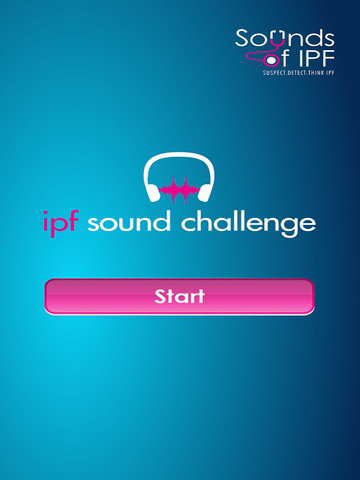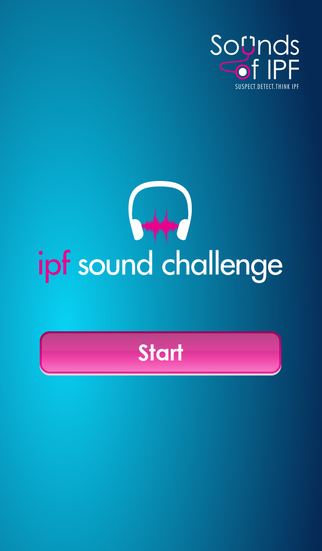Boehringer Ingelheim Launches Idiopathic Pulmonary Fibrosis Mobile App, Web Page To Raise Disease Awareness
Germany-based multinational pharmaceutical company Boehringer Ingelheim has launched a new mobile app and web page self-test as part of its efforts to raise awareness of Idiopathic pulmonary fibrosis (IPF), a chronic, progressive, severely debilitating, and ultimately lethal lung disease for which there are no FDA-approved treatment options in the U.S. Although lung transplantation has been shown to improve survival, the procedure is uncommon because of the limited availability of lungs for transplantation, or people are either too ill or don’t survive long enough to undergo the transplant.
Boehringer Ingelheim says IPF affects as many as 14-43 people per 100,000 people worldwide, and is characterized by progressive scarring of lung tissue and loss of lung function over time. The incidence of IPF can vary considerably and there is some evidence that the population is increasing. Development of scarred tissue is called fibrosis. Over time, as the tissue thickens and stiffens with scarring, the lungs lose their ability to take in and transfer oxygen into the bloodstream, and vital organs begin to starve for oxygen. As a result, individuals with IPF experience shortness of breath, cough, and often have difficulty participating in everyday physical activities.
 The IPF Sound Challenge app allows people to practice identifying various respiratory conditions, including IPF. After each recording, patients are asked to identify their condition from four options. The correct answer is be displayed, as well as an option to listen to that sound again or continue on to the next sound. An overall score is presented as a percentage at the end of the test. The Boehringer Ingelheim IPF Sound Challenge iOS app is free, requires iOS 6.0 or later, is compatible with iPhone, iPad, and iPod touch, and is optimized for iPhone 5 and 6. It can be downloaded from the Apple App Store here:
The IPF Sound Challenge app allows people to practice identifying various respiratory conditions, including IPF. After each recording, patients are asked to identify their condition from four options. The correct answer is be displayed, as well as an option to listen to that sound again or continue on to the next sound. An overall score is presented as a percentage at the end of the test. The Boehringer Ingelheim IPF Sound Challenge iOS app is free, requires iOS 6.0 or later, is compatible with iPhone, iPad, and iPod touch, and is optimized for iPhone 5 and 6. It can be downloaded from the Apple App Store here:
https://itunes.apple.com/ca/app/ipf-sound-challenge/id907095917?mt=8
An Android version of the app. can be downloaded here:
https://www.appbrain.com/app/ipf-sound-challenge/com.ipf.app
Boehringer Ingelheim has also posted a self-test Web page where visitors can determine whether the “Velcro crackles” detected are serious enough to indicate whether further investigation is required. The test allows users to practice identifying sounds associated with various respiratory conditions from recordings made with a 3M Littmann Electronic Stethoscope 3200 in a clinic, with patients at rest. After each recording you will be asked to identify the patient’s condition from four options. The correct answer will be displayed as well as an option to listen to that sound again or continue on to the next sound. Your overall score will be presented as a percentage at the end
The test selects patient recordings at random from a larger sound bank so that the test can be used multiple times.
Early Diagnosis Key
The company notes that diagnosing IPF is complicated. Physicians must first rule out cardiovascular disease and respiratory conditions such as chronic obstructive pulmonary disease (COPD), which may present similar symptoms. Misdiagnosis occurs in around half of patients with the average time from first symptoms to diagnosis being between one and two years.
Diagnosis of IPF is challenging and requires a series of tests conducted in a multidisciplinary approach. Diagnosis is also confounded by conditions such as COPD, asthma, or congestive heart failure, which may all present with similar symptoms. As many as one in two patients with IPF are reported as having been initially misdiagnosed.
IPF is not characterized by a single genetic defect and, even when strongly suspected, accurate diagnosis relies on multidisciplinary involvement of experts. Computed tomography scans may provide accurate information, but IPF’s rarity makes wide scale screening infeasible.
[adrotate group=”3″]
Boehringer Ingelheim notes that before a patient presents in a clinic, there are several factors at play. As the mean age of onset is 65 years, many patients affected with IPF attribute the early signs to the aging process or dismiss them altogether, meaning patients can fail to seek treatment until their condition is very advanced. Additionally, many symptoms such as finger clubbing, fatigue, weakness, and weight loss are only present occasionally and rarely at the early stages of the disease. Cough and dyspnoea are often the first observed symptoms and are typically attributed to other factors like smoking or age which can be another barrier patients seeking medical attention.
The complexity of diagnosis and the fact that some of the symptoms of IPF are also characteristic of other conditions could be contributing factors to the high rate of misdiagnosis. A misdiagnosis can lead to a patient being treated with inappropriate therapies.
Researchers suggest that lack of therapy options for IPF may be one reason doctors have historically been hesitant to diagnose the condition, but rather focus on excluding alternative diagnoses. However, they report that earlier referral to a specialist centre has been linked to patients living longer, despite the limited treatment options available.
Improving IPF Diagnosis
Boehringer Ingelheim says the distinctive sound of the lungs crackling, similar to that of Velcro, during auscultation is a strong indicator of IPF, with over 80 percent of patients with IPF manifesting this distinctive, Velcro-like crackling sound that can be detected through a stethoscope. As noted above, example sounds, recorded from patient case studies, are available to compare the differences between various pulmonary diseases and demonstrate what IPF could sound like.
 The presence of this characteristic Velcro sound, in a patient with symptoms consistent with IPF, warrants the referral of a patient to a specialist. Consequently, Boehringer Ingelheim’s Sounds of IPF app and Web page enable no-cost self-screening by patients themselves.
The presence of this characteristic Velcro sound, in a patient with symptoms consistent with IPF, warrants the referral of a patient to a specialist. Consequently, Boehringer Ingelheim’s Sounds of IPF app and Web page enable no-cost self-screening by patients themselves.
The latest guidelines developed for the UK National Institute for Health and Clinical Excellence (NICE) by a multidisciplinary group, emphasize:
• The potential health benefits of an early diagnosis for people with IPF and people with other respiratory conditions
• The importance of early identification of possible interstitial lung diseases in primary care and referral in diagnosing a patient with IPF
• The need for an accurate diagnosis so that only cost effective interventions are offered
In July, the U.S. Food & Drug Administration (FDA) granted Breakthrough Therapy designation to Boehringer Ingelheim’s drug Nintedanib as an investigational small molecule tyrosine kinase inhibitor (TKI) in development by Boehringer Ingelheim and under FDA review for the treatment of people with idiopathic pulmonary fibrosis (IPF). Nintedanib targets growth factors, which have been shown to be potentially involved in pulmonary fibrosis — the vascular endothelial growth factor receptor (VEGFR), fibroblast growth factor receptor (FGFR), and platelet-derived growth factor receptor (PDGFR).
Results from two global Phase 3 studies (INPULSIS-1 and INPULSIS-2) evaluating the efficacy and safety of nintedanib in the treatment of IPF were presented at the American Thoracic Society (ATS) International Conference and published in the New England Journal of Medicine in May 2014.
Nintedanib was granted Priority Review designation in June 2014, Fast Track designation in June 2013 and orphan drug status in June 2011.
“Boehringer Ingelheim is proud that the FDA has granted Breakthrough Therapy designation for nintedanib, which will help expedite its development and review as a potential treatment option for patients with IPF,” says Sabine Luik, M.D., senior vice president, Medicine & Regulatory Affairs at Boehringer Ingelheim Pharmaceuticals, Inc. in a release “We are committed to working with the FDA during the NDA review of nintedanib for people living with this serious and life-threatening lung disease, for which there are currently no FDA-approved treatment options.”
The Breakthrough Therapy designation process was established by the FDA in 2012 and is intended to expedite the development and review of drugs for serious or life-threatening conditions and preliminary clinical evidence indicates that the therapy may demonstrate substantial improvement over existing therapies on one or more clinically significant endpoints.
Informational videos are available at:
https://m.youtube.com/channel/UCbshSSmTjNv5bH2X3lUb1wA
The Boehringer Ingelheim group is one of the world’s 20 leading pharmaceutical companies. Headquartered in Ingelheim, Germany, Boehringer Ingelheim operates globally with 142 affiliates and a total of more than 47,400 employees. The focus of the family-owned company, founded in 1885, is researching, developing, manufacturing and marketing new medications of high therapeutic value for human and veterinary medicine.
Taking social responsibility is an important element of the corporate culture at Boehringer Ingelheim. This includes worldwide involvement in social projects, such as the initiative Making more Health and caring for the employees. Respect, equal opportunities and reconciling career and family form the foundation of the mutual cooperation. In everything it does, the company focuses on environmental protection and sustainability.
In 2013, Boehringer Ingelheim achieved net sales of about 14.1 billion. R&D expenditure corresponds to 19.5% of its net sales.
For more information visit:
https://www.boehringer-ingelheim.com/
Sources:
Boehringer Ingelheim
Apple Inc.
UK National Institute for Health and Clinical Excellence (NICE)
Image credits:
Sources:
Boehringer Ingelheim







